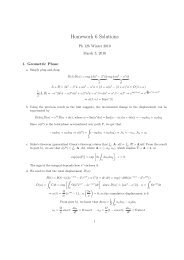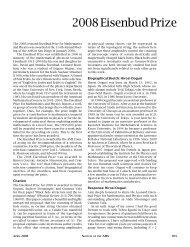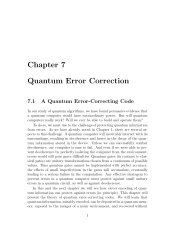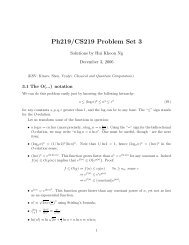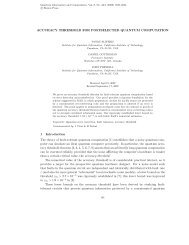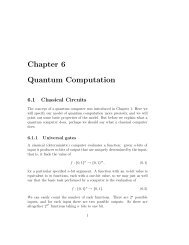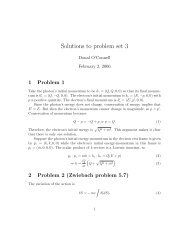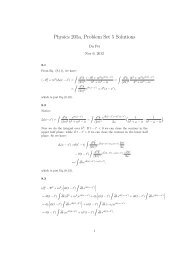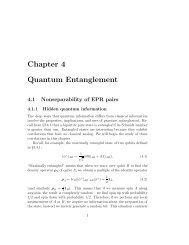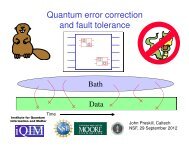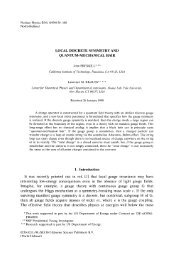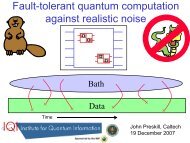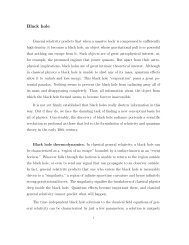Cosmic Strings and Other Topological Defects by A. Vilenkin and ...
Cosmic Strings and Other Topological Defects by A. Vilenkin and ...
Cosmic Strings and Other Topological Defects by A. Vilenkin and ...
You also want an ePaper? Increase the reach of your titles
YUMPU automatically turns print PDFs into web optimized ePapers that Google loves.
physics pointing us to ever smaller distances, <strong>and</strong> the deepest questions about cosmology<br />
pointing us to ever earlier times, the study of the elementary particle meets the study of<br />
the universe—cosmology <strong>and</strong> particle physics are one.<br />
The essential thrust of this unification is twofold. In particle physics, the most energetic<br />
current accelerator experiments can resolve the structure of matter at a distance<br />
scale of order 10 −16 cm. But particle theorists boldly speculate about the properties of the<br />
fundamental interactions down to distance scales of order 10 −33 cm. We crave experimental<br />
evidence to constrain these speculations, but no accelerator in the foreseeable future<br />
will be sufficiently energetic to probe this very-short-distance physics directly. Instead,<br />
particle physicists look to the early universe to serve as their accelerator. The universe<br />
was once so hot as to probe the behavior of matter at exceedingly short distances, <strong>and</strong> we<br />
can hope to detect surviving relics of that fiery past in today’s universe.<br />
The other side of the coin is that ideas from particle physics can illuminate the central<br />
questions of cosmology. Among these questions: Where did the matter of the universe<br />
come from? Why is the universe so large, so nearly isotropic, <strong>and</strong> so nearly homogeneous.<br />
What explains the origin of galaxies, of clusters of galaxies, of superclusters? What is the<br />
nature of the “dark matter” that dominates the halos of spiral galaxies? Since the late<br />
70’s, particle physics has offered a wealth of appealing answers to these questions. The<br />
only trouble is that there are too many mutually contradictory answers; they cannot all<br />
be right.<br />
A central theme of modern cosmology is the study of “large scale structure”—the way<br />
that the galaxies are distributed in the universe. The very early universe was much more<br />
2



